Janux stock plunges after hours following mCRPC trial data
This week will feature earnings from five of the mega caps — Apple (NASDAQ:AAPL), Microsoft (NASDAQ:MSFT), Alphabet (NASDAQ:GOOGL), Meta Platforms (NASDAQ:META), and Amazon (NASDAQ:AMZN) — along with three major central bank meetings: the Fed, ECB, and BOJ. But while all eyes will be on these events, the Treasury will be draining another $100 billion in liquidity from the market in the background.
On October 28, $26.0 billion is scheduled to settle, followed by $25.1 billion on October 30 and $58.3 billion on October 31. Settlements in recent weeks have led to greater strain in the funding markets and increased usage of the Fed’s overnight standing repo facility.
It’s also month-end, and with the added liquidity drain, overnight rates are likely to rise, tightening available market liquidity even further.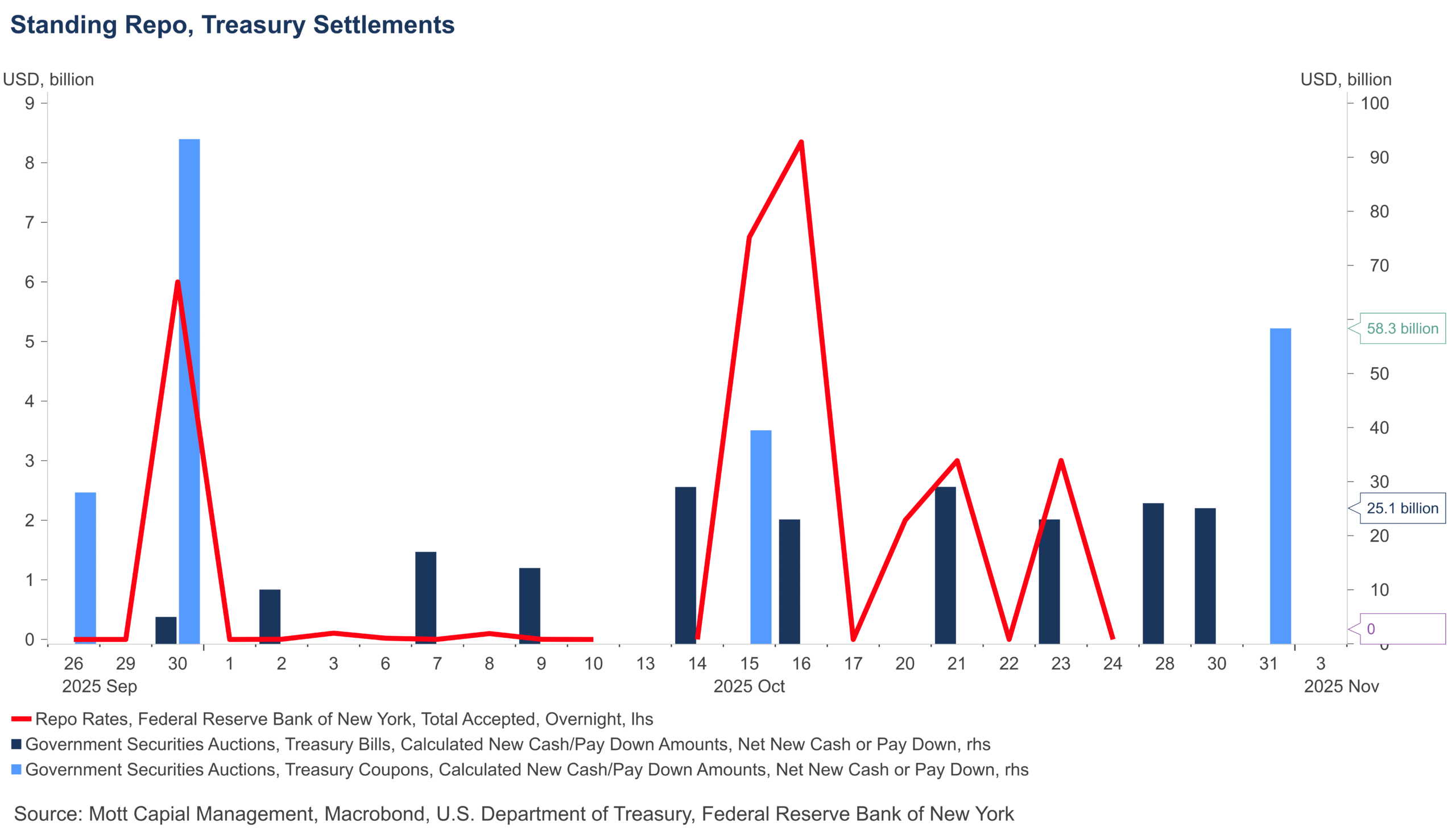
Determining the potential impact on risk asset prices from the ebb and flow of liquidity is no easy task. However, when more volume passes through the repo market in the form of Treasuries, repo activity in equities tends to decline.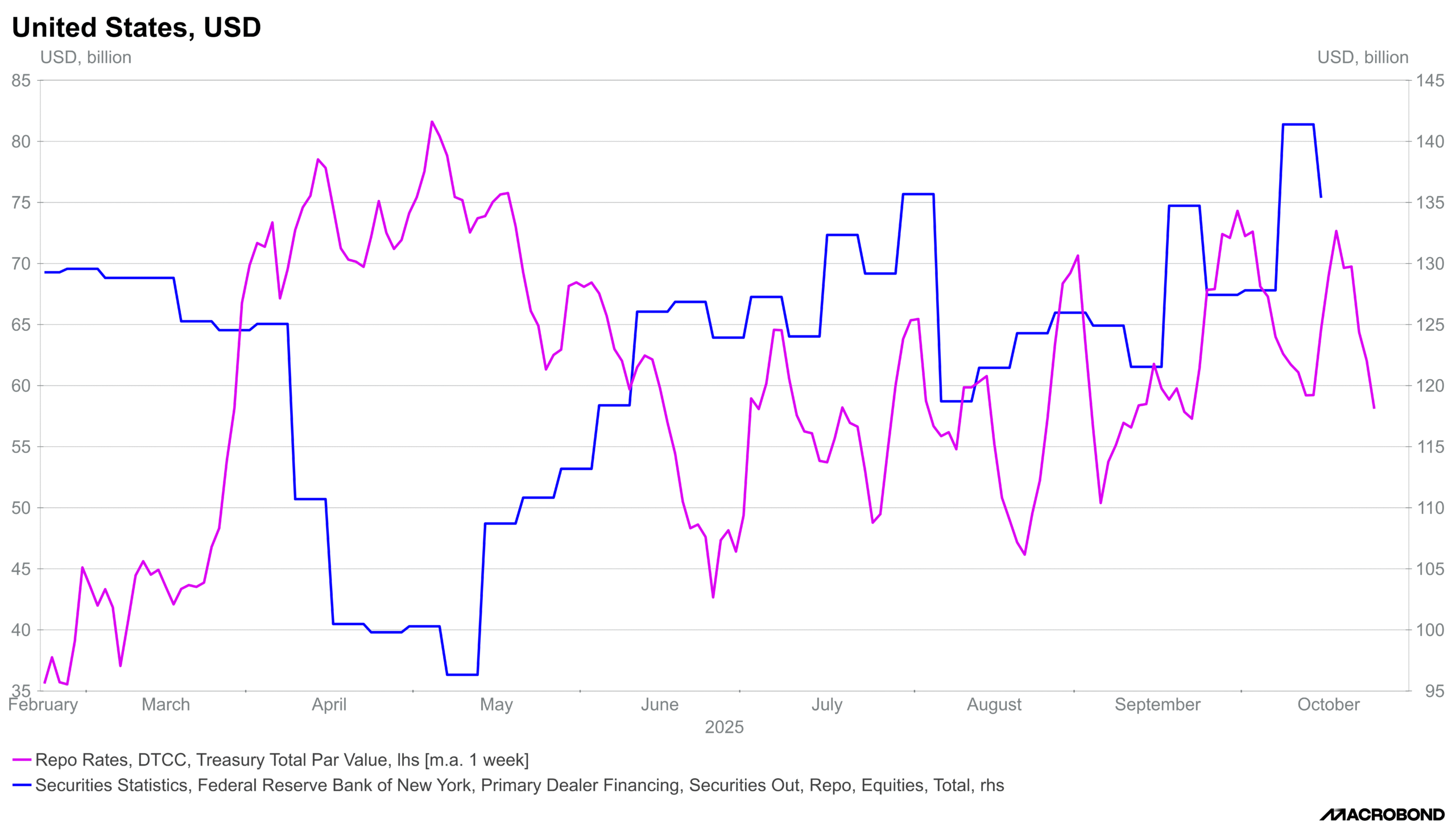
We also know that equity repo financing tends to be bullish for stocks when it rises and bearish when it falls. Therefore, if higher rates and Treasury settlements increase volumes in the overnight markets for Treasury securities, we should expect weaker equity prices.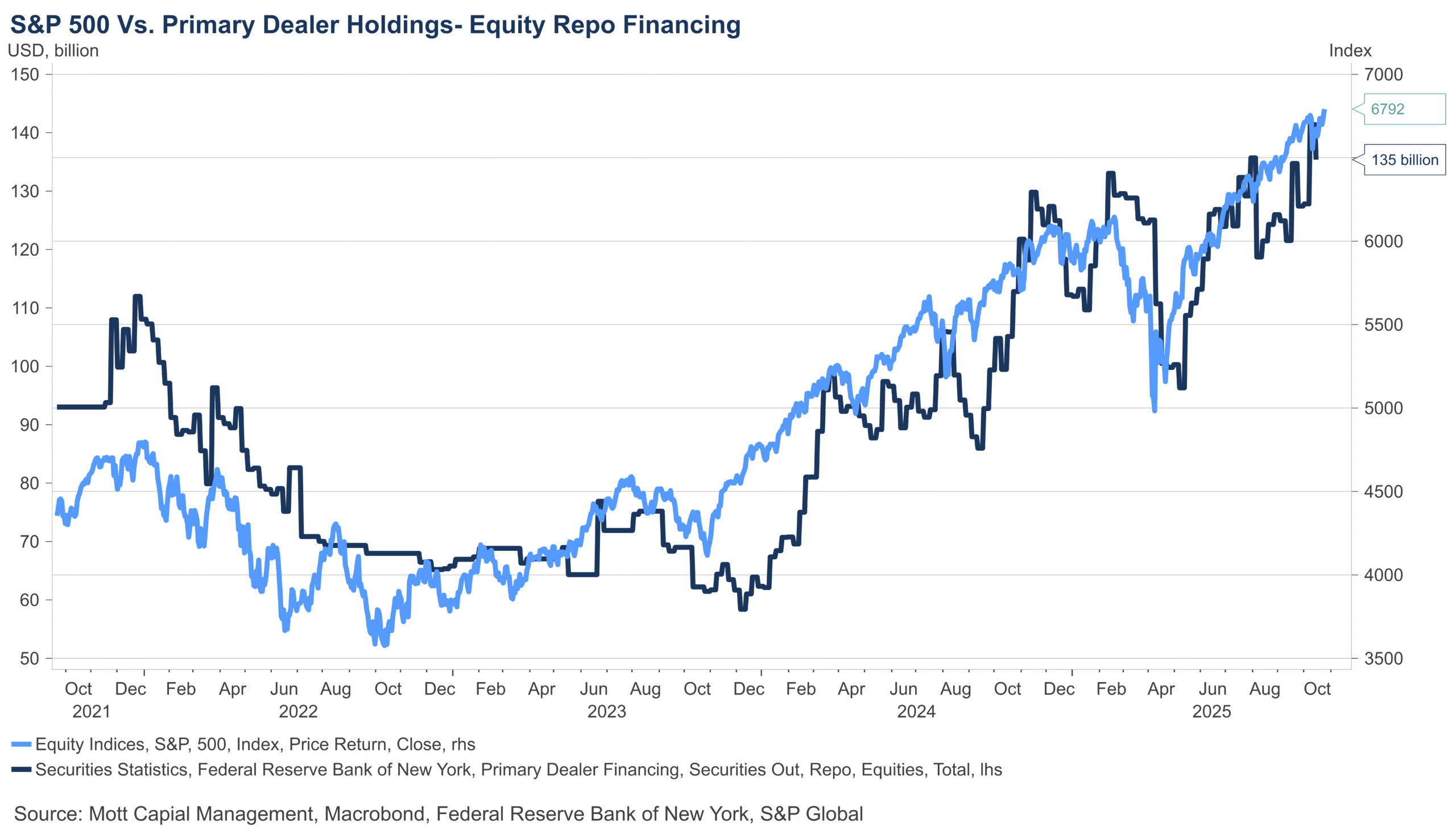
Additionally, this week, because of earnings season, we should see the end of most of the volatility dispersion trades that have been taking place since mid-September. We’ve already started to see that process unfold in recent trading days as companies have reported results. The S&P 500 dispersion index has already turned lower, and it should continue to decline through the week as more company results come in.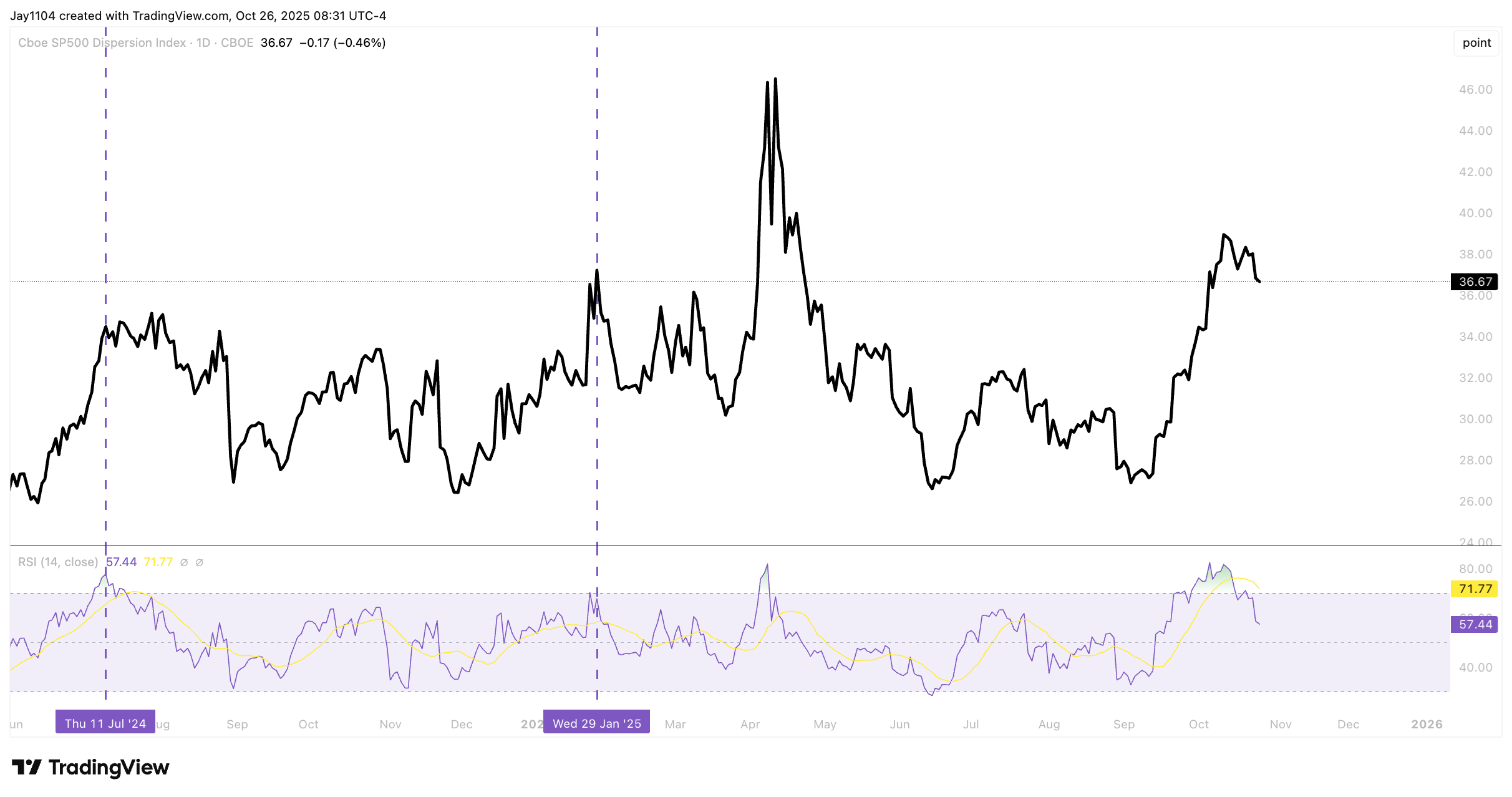
We’ve also already seen constituent volatility in the S&P 500 start to come down, and it’s likely to fall further this week.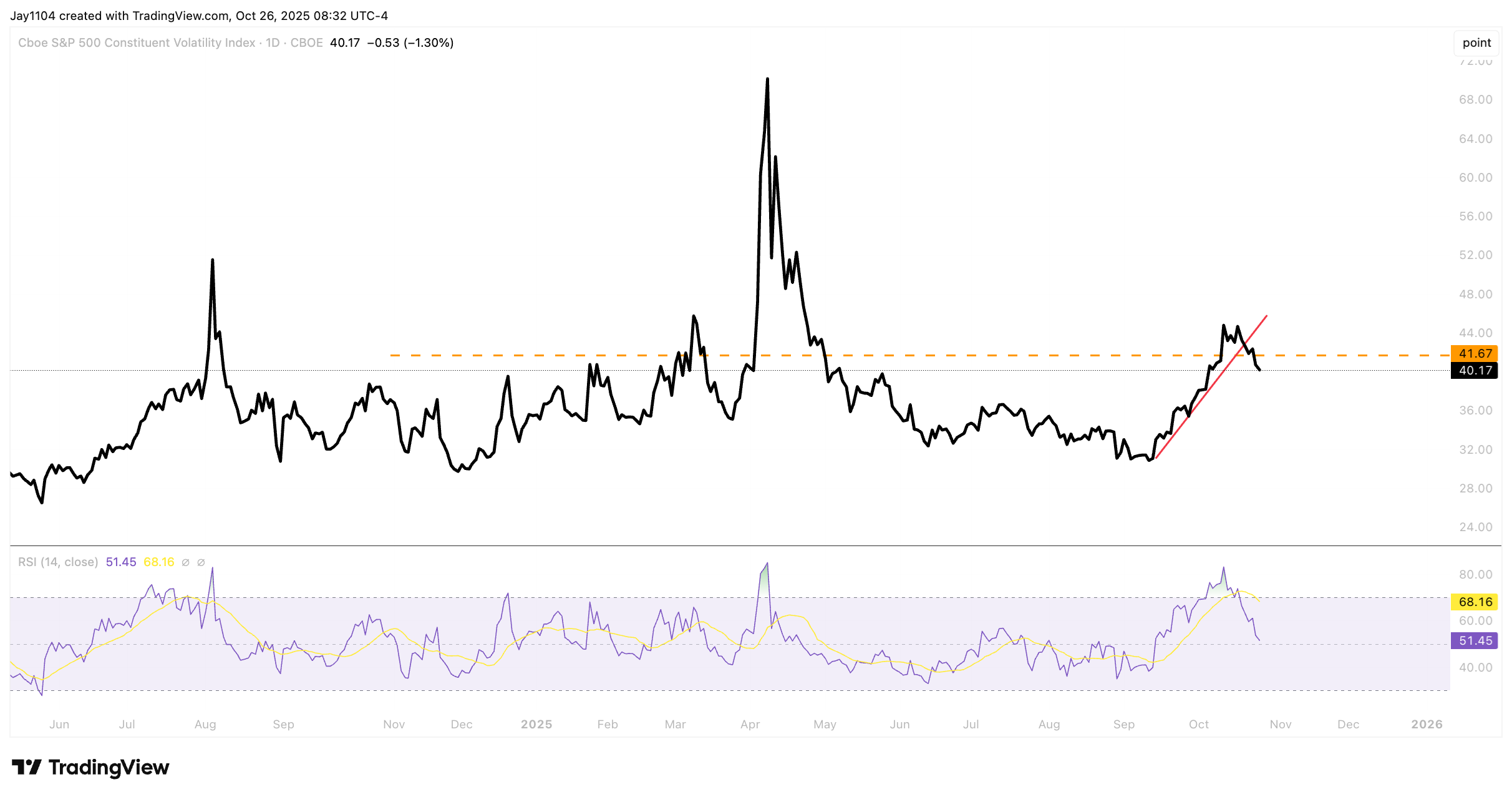
This would mean that implied correlations are also likely to reverse and begin to rise. The 1-month implied correlation index is already back below 8.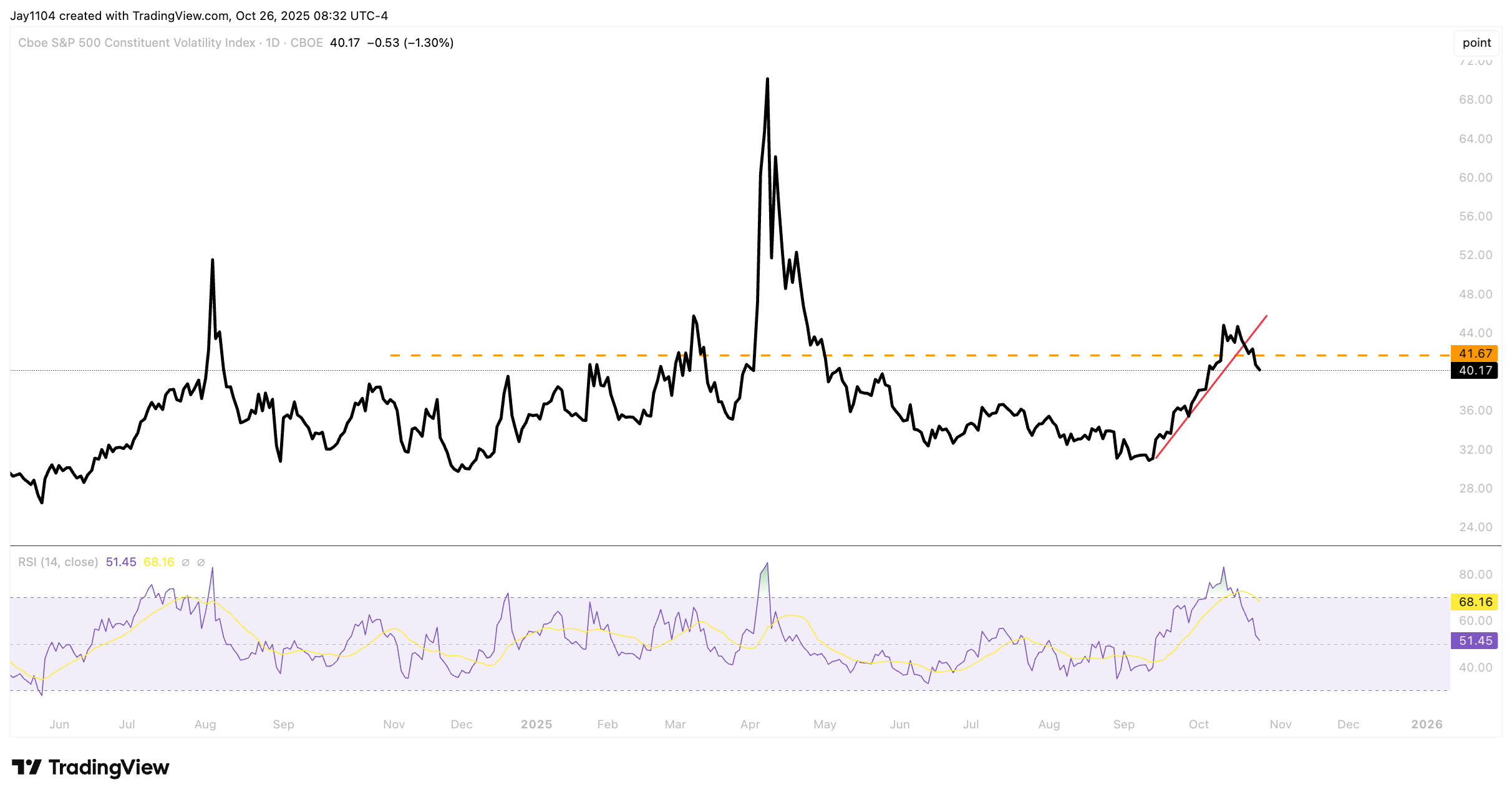
We know that when correlations rise faster than dispersion, the spread between the two contracts narrows, and stock prices tend to fall.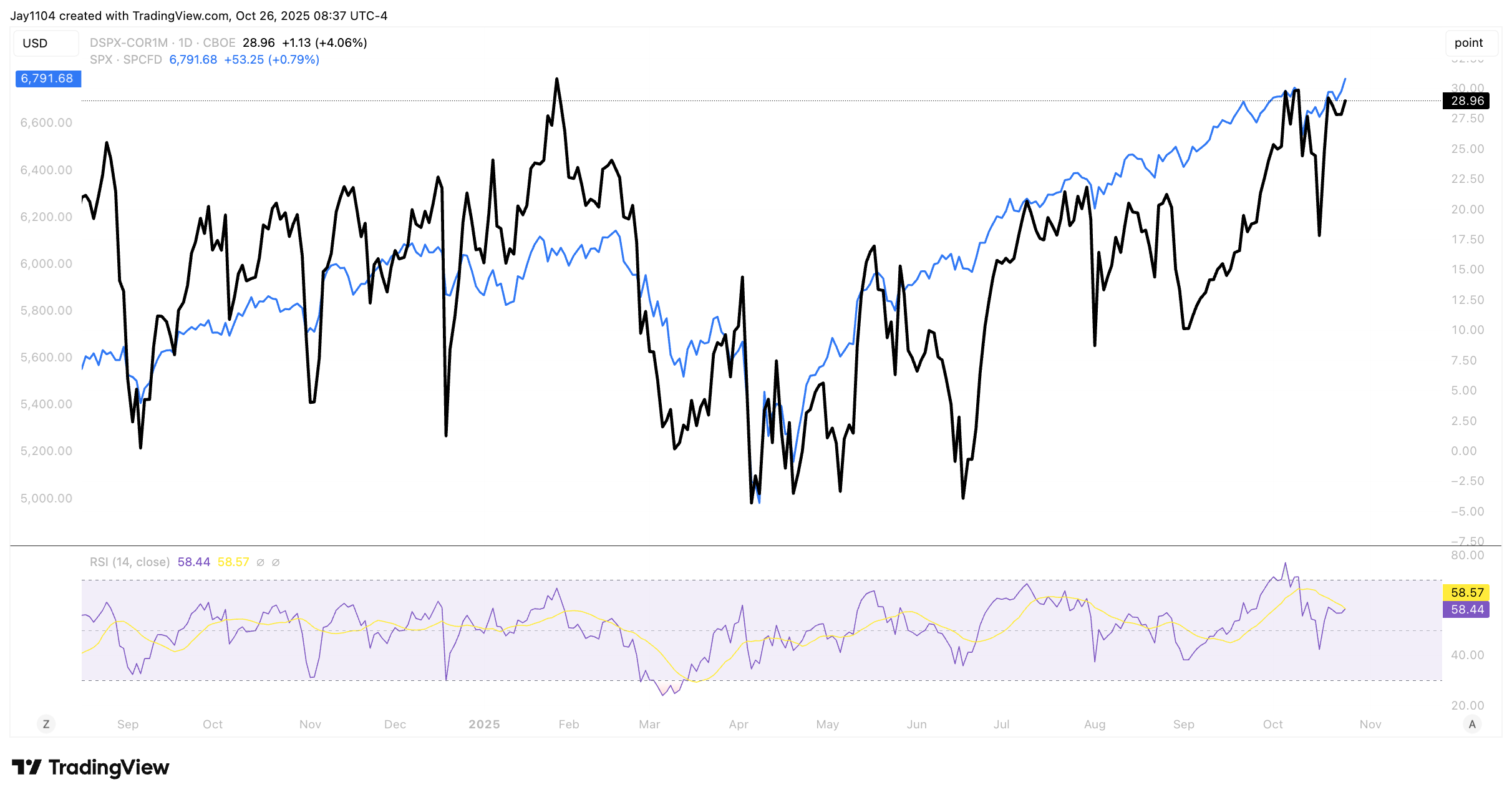
Also, realized volatility metrics remain historically low, as previously noted, and that hasn’t changed. In fact, patterns show that when 3-month realized volatility begins to rise, it’s often followed by new highs in the S&P 500, as in 2018 and 2020.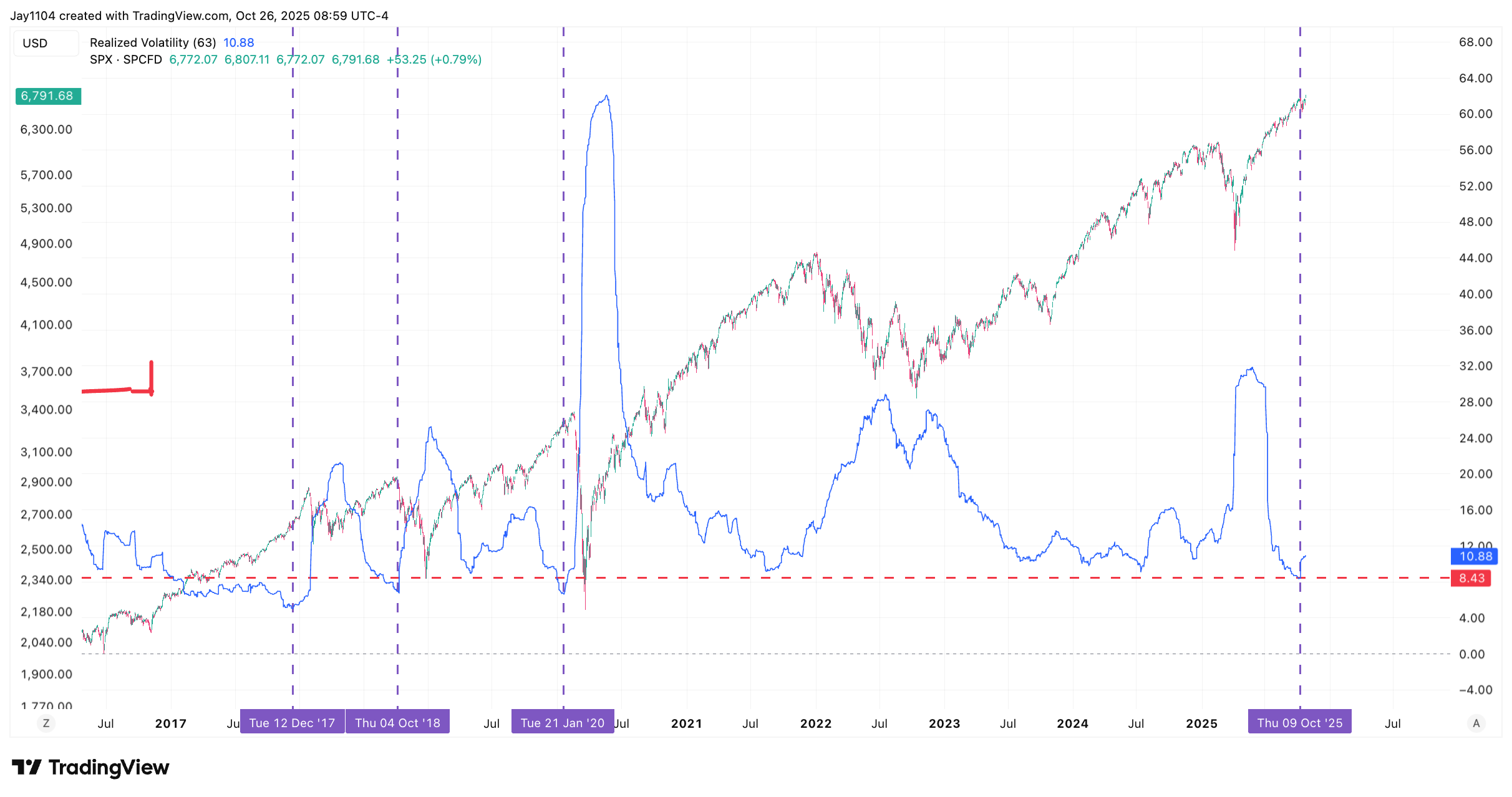
We did see the S&P 500 rally modestly on Friday, gaining around 80 bps, although it once again finished with a weak close. We’ve seen this same pattern several times over the past two weeks — a weak close followed by a gap higher, and then an eventual fill of that gap. Friday was no different. The question, of course, is whether we gap up again on Monday or simply drop and fill Friday’s gap. The pattern suggests that the gap does get filled rather soon.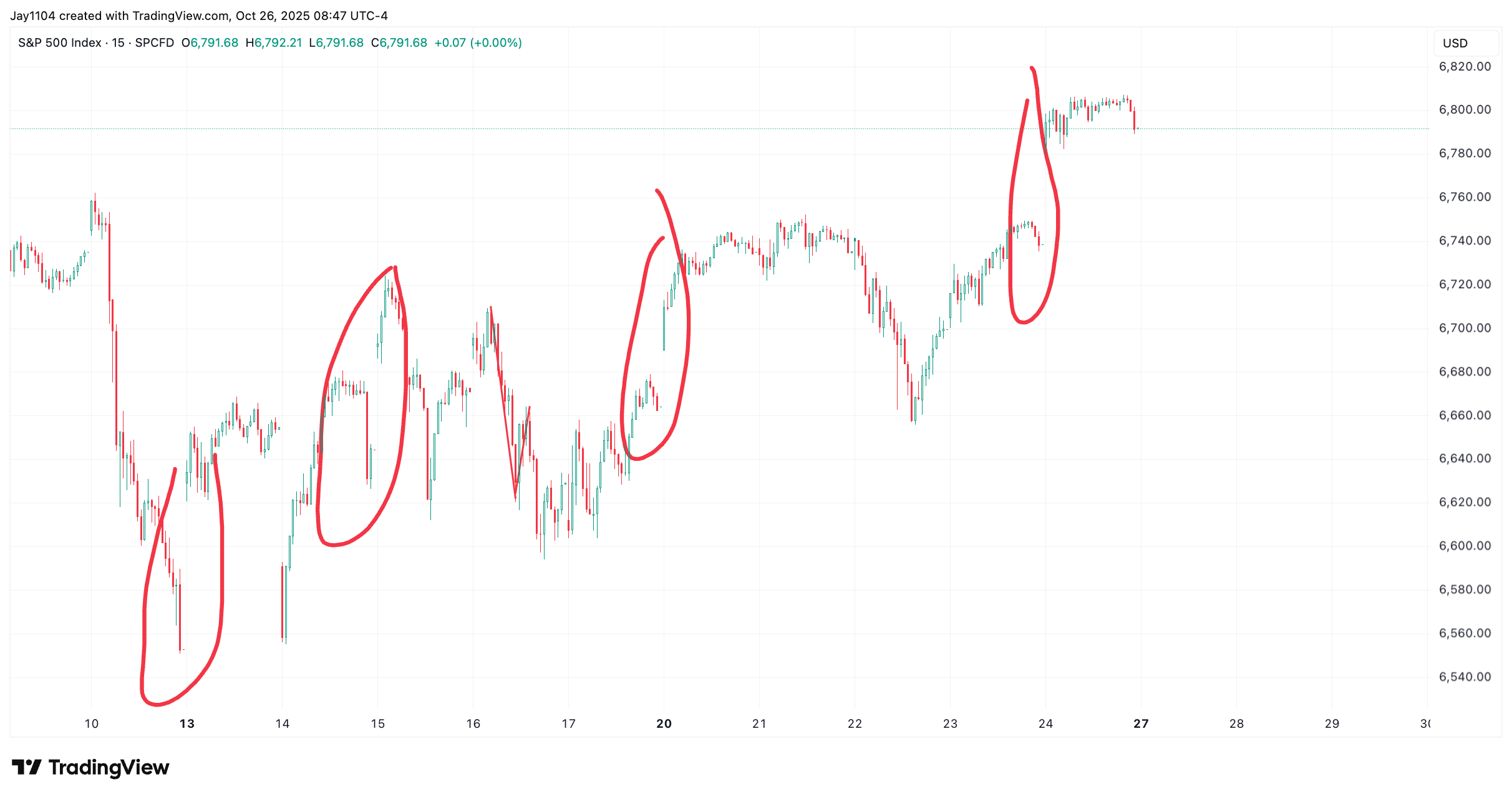
Liquidity in the market has fallen sharply since July, and funding conditions have tightened. Meanwhile, the dispersion trade that has helped support the market since September is coming to an end and is likely to unwind, while realized volatility is rising. The only question that remains is whether all of this will finally lead to the market decline I’ve been expecting.
One way or another, we’re about to find out.
